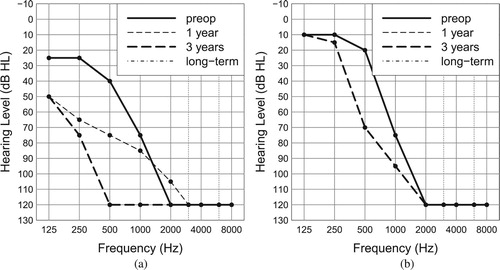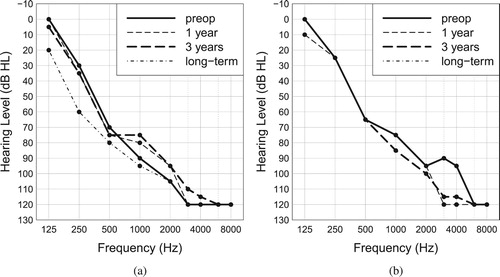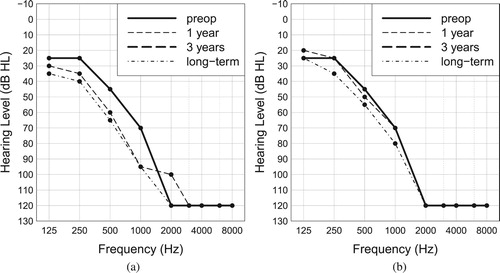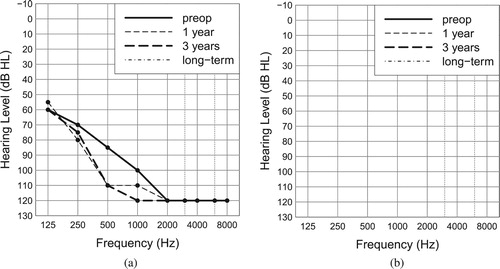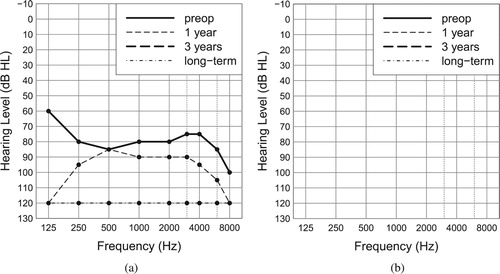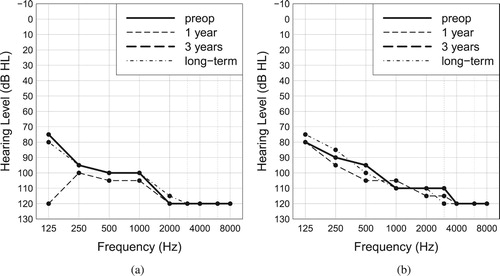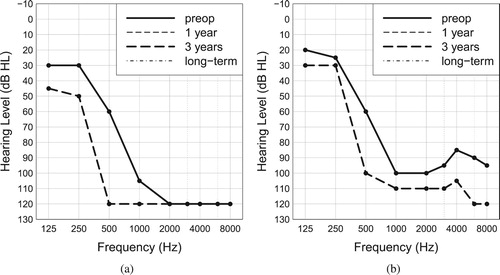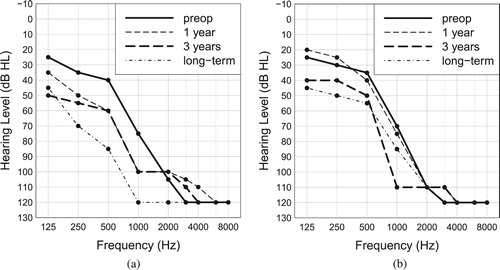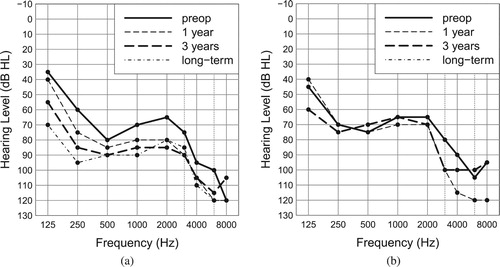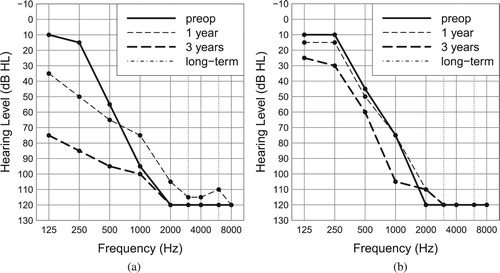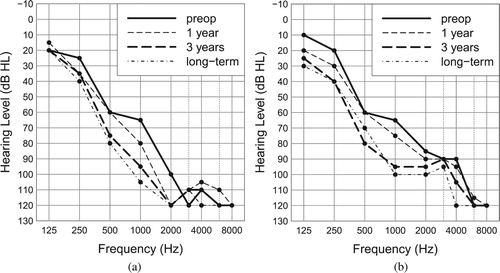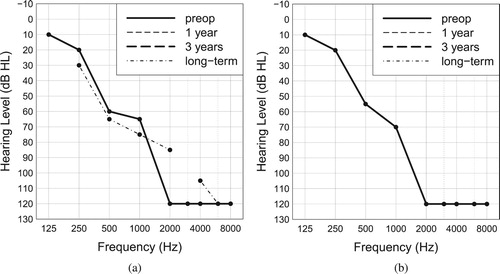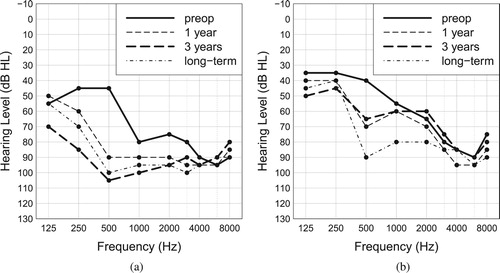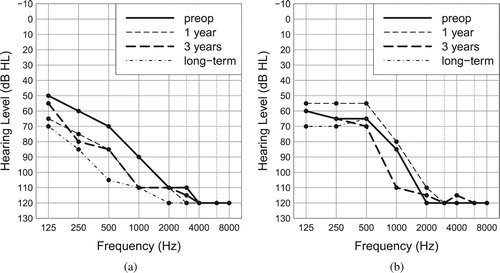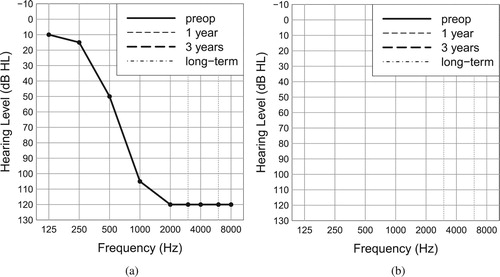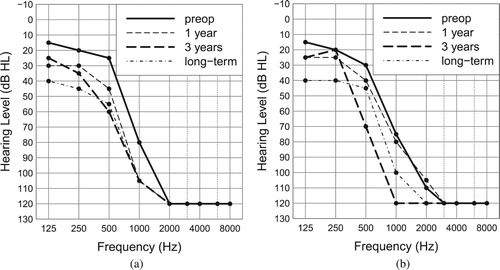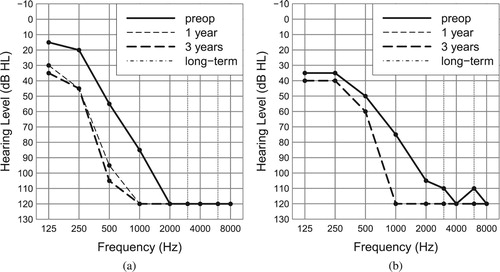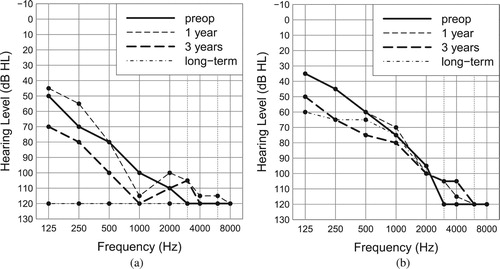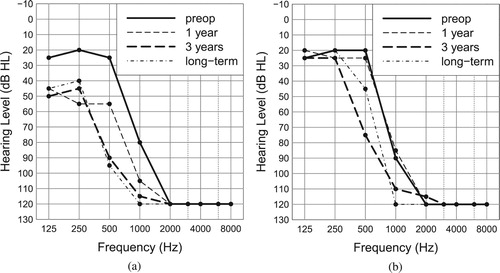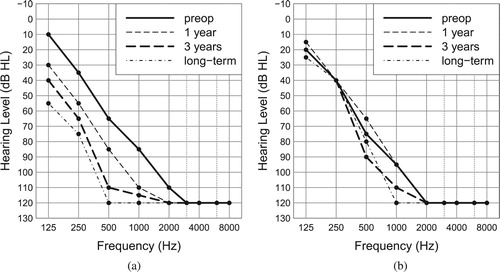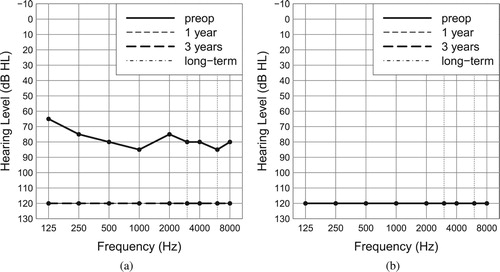Cochlear Implants International
An Interdisciplinary Journal for Implantable Hearing Devices
Volume 21, 2020 - Issue 5
Open access
1,240
Views
2
CrossRef citations to date
0
Altmetric
Original articles
Cochlear implantation and residual hearing preservation long-term follow-up of the first consecutively operated patients using the round window approach in Uppsala, Sweden
Nadine Schart-MorénDepartment of Surgical Sciences, Section of Otolaryngology, Head and Neck Surgery, Uppsala University Hospital, SE-751 85Uppsala, SwedenCorrespondence[email protected]
, Elsa ErixonDepartment of Surgical Sciences, Section of Otolaryngology, Head and Neck Surgery, Uppsala University Hospital, SE-751 85Uppsala, Sweden
, Hao LiDepartment of Surgical Sciences, Section of Otolaryngology, Head and Neck Surgery, Uppsala University Hospital, SE-751 85Uppsala, Sweden
& Helge Rask-AndersenDepartment of Surgical Sciences, Section of Otolaryngology, Head and Neck Surgery, Uppsala University Hospital, SE-751 85Uppsala, Sweden https://orcid.org/0000-0002-2552-5001
https://orcid.org/0000-0002-2552-5001
Pages 246-259
|
Published online: 09 Jun 2020
Related research
People also read lists articles that other readers of this article have read.
Recommended articles lists articles that we recommend and is powered by our AI driven recommendation engine.
Cited by lists all citing articles based on Crossref citations.
Articles with the Crossref icon will open in a new tab.

